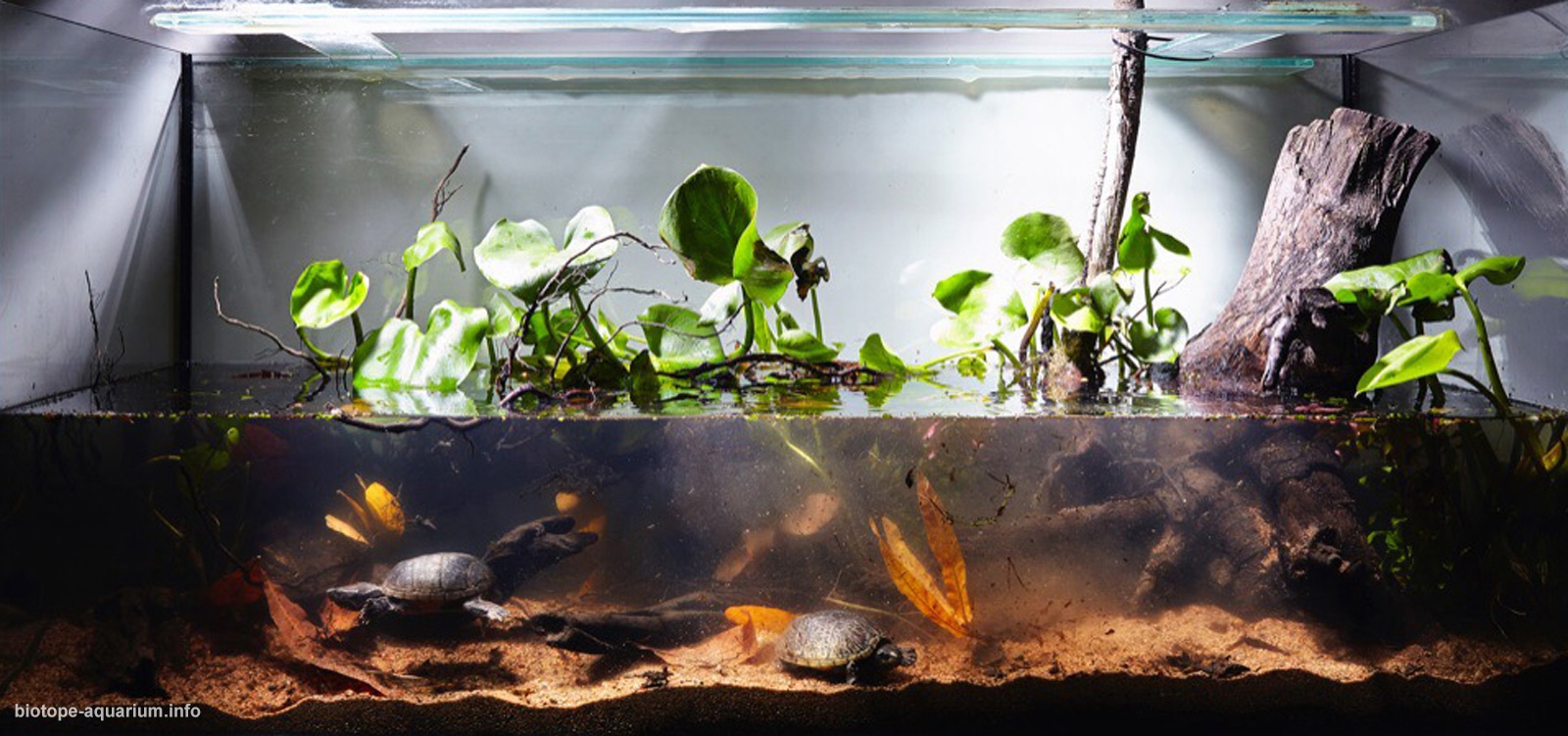Everglades Park, wetland, Florida, USA
93rd place in Biotope Aquarium Design Contest 2018
![]() Russia. Daria Kondakova
Russia. Daria Kondakova

Volume: 360 L
Dimensions: 120x50x60 cm
List of fishes: Sternotherus odoratus
List of plants: Calla palustris, Ludwigia palustris
Description of decorations: Driftwood: dark, similar to the roots of trees, similar to those presented in the nature biotope. Dark sand (imitation of swamp, silt).
Description of equipment: JBL CristalProfi i200 greenline filter, JBL 6042400 JBL ProTemp S 150W, Tetra Tetronic LED.
Water parameters: The temperature is 25°C, pH is 6.5.
INFORMATION ABOUT BIOTOPE
Description of the area surrounding the biotope: The Everglades National Park area of 6105 square kilometers is located in the southern part of the subtropical marshland Everglades in Florida. It is a part of the UNESCO World Heritage Site. Everglades is a mixture of natural areas: tropical forests (in the north), mangrove forests (along the coast of the Gulf of Mexico), swamps. The park is surrounded by Miami, Homestead, Florida City, the Florida Strait, the Gulf of Mexico, the Florida Keys and the Big Cypress Reserve. The fauna of the Everglades is mainly rich in birds. There is not many mammals here, because most of its territory is overgrown with very sharp grass: Cladium or so-called sword grass (it grows up to 3 meters in height). Cladium can easily cut the skin of mammals and humans. Therefore, only thick-skinned armored turtles, crocodiles and alligators can live in sword grass thickets.
Description of the underwater landscape of the biotope: In the Everglades there is flat terrain. Underwater landscape consists of sand, leaves, driftwood, and silt. In the roots of trees small and young fishes live. Water turtles burrow in the mud and leaves.
Description of the parameters of the habitat: The water is clear, slightly brown because of the leaves and silt. pH is 5.6-7.5.
List of fishes and invertebrates occurring in the nature biotope: Lepisosteus platyrhincus, Alligator mississippiensis, Amia calva, Heterandia formosa, Lucania goodei, Elassoma evergladei, Jordanella floridae, Cambarellus schmitti, Pomacea paludosa.
List of plants found in the nature biotope: Cladium jamaicense, Fissidens fontanus, Bacopa caroliniana, Bacopa monnieri, Didiplis diandra, Echinodorus tenellus, Eleocharis parvula, Hydrocotyle verticillata, Ludwigia arcuata, Ludwigia brevipes, Ludwigia glandulosa, Ludwigia repens, Micranthemum micranthemoides, Sagittaria subulata.
Threats to the ecology: Until 1947, the Everglades was influenced by human activities (drainage of swamps, buildings). To stop the pernicious influence of a person on the Everglades, the US government made most of it a National Park. To some extent, the park is a reserve and home to very rare animals such as manatees and Florida cougar. This aquarium is made to show the beauty of the nature of the Everglades. Even those who have not been to this park should realize that its nature is gorgeous. People should not pollute it. They should not drain ponds and chop wood.
Sources of information:
http://florida-inform.com/
https://ru.m.wikipedia.org/
https://simple-fauna.ru/
Comments of the members of the jury of Biotope Aquarium Design Contest 2018

Interesting species to keep. Although they do not need a lot of UV, they still need a place where they can completely dry up. So give them some spaces above water and a bit bigger tank, since your used volume is only 1/3 of the tank.
